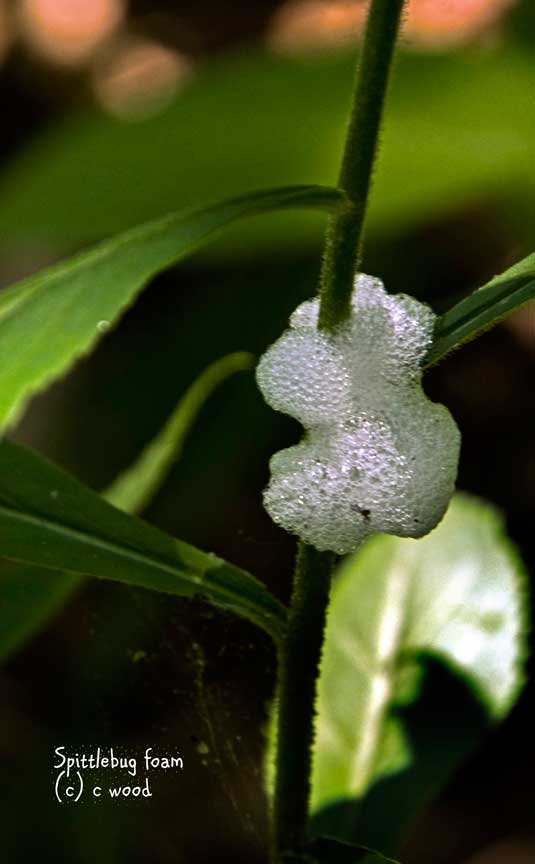Help! There’s frog spit on that plant
Published 1:13 pm Thursday, August 13, 2015

- Spittlebug foam
When I was a kid, I loved to look for frog spit, those bubbly blobs of foam found on the stems of many plants. I had forgotten all about frog spit until my friend Sandra and I happened to find some on plant stems at Wintergreen. The first thing she said was, “Oh, frog spit!” It turns out that this name, which I always thought was a local term, is fairly universal. She grew up in Massachusetts. Another friend, who lives in the United Kingdom, says that as a child she called this foam cuckoo spit, probably because it generally first appeared around the same time as the cuckoos. Spit, not surprisingly, seems to be the common denominator.
There are approximately 23,000 species of spittlebugs. They lay eggs on plant stems where the eggs overwinter. In early spring, tiny spittlebugs (nymphs) hatch. They insert their sucking mouthparts into plants and begin feeding on fluids from the xylem. A typical spittlebug can extract 300 times its body weight in xylem fluids in just an hour.
Over a period of four to five weeks, the spittlebug nymphs grow and cover themselves with liquid waste and air bubbles. This spittle-like mass protects them from fluctuations in temperature and from dehydration. It also hides them from predators and has a bitter taste that discourages too much investigation.
Trending
Adult spittlebugs are only a quarter inch long when they emerge. They’re often called froghoppers because they have large googley eyes on the sides of their heads and are champion jumpers. They can leap approximately 27 and a half inches or just about the same distance as fleas. Their feat, however, is more amazing because they are 60 times heavier than fleas. How do they do it? Froghoppers have two highly specialized hind legs that work like catapults. When these critters aren’t jumping, their specialized legs are just dragged on the ground.
Spittlebugs can cause some damage to plants, but generally their spittle just looks unsightly. Look for frog spit on your next hike; check your home garden too. You just might find some on the roses or even strawberry plants. Poke around inside the frog spit and you’ll find the nymph, which looks a bit like an oval egg with a nipple or mouth attached to one end.
If you find frog spit unsightly in your home garden, just spray it with a stream of water from the hose. Otherwise, just enjoy the amazing ability of the spittlebug to hide. Be a child again.





